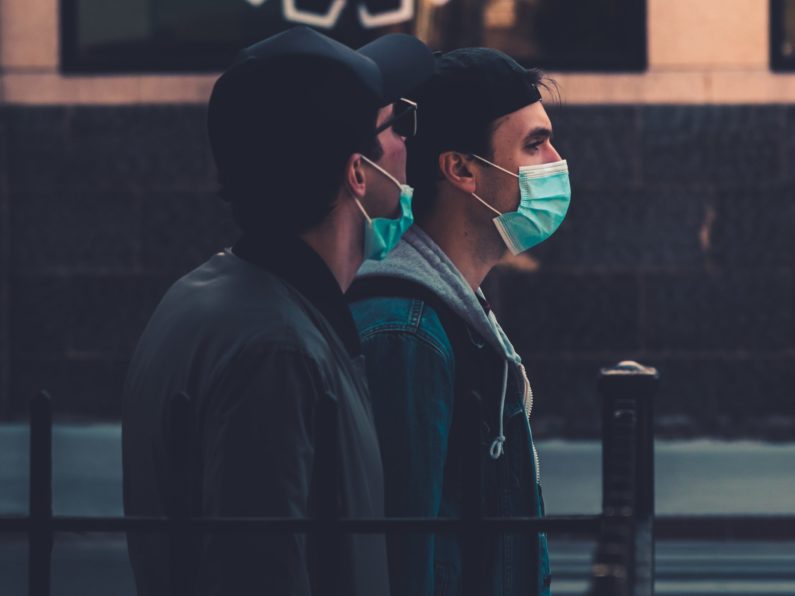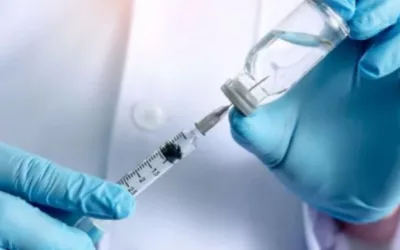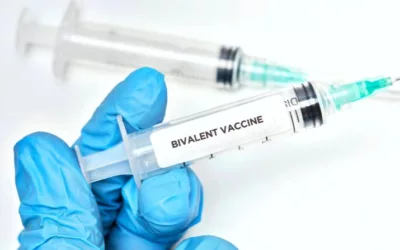Teton County is mirroring national COVID-19 trends, fueling concern among local health officials. Specifically, they point to younger adults who comprise a significant portion of COVID cases here. Higher infection rates among this group could lead to a dramatic resurgence in the valley, Dr. Travis Riddell, Teton District health officer, said Friday during a COVID-19 briefing.
Riddell described how this trend is playing out across the nation. “First you see the spike in younger adults, then you see that spike distributing across the age spectrum, then you see hospitalization rates increase, then you see death rates increase,” he said.
That’s because people in this age group are frequently interacting with high-risk folks. It may be the check-out person at the grocery store, the bank teller, the pharmacist, the person pouring your beer or pulling your espresso, he said. “These are essential people that we need in our community and it’s all of our responsibility to protect them.”
“These are essential people that we need in our community and it’s all of our responsibility to protect them.”
– Dr. Travis Riddell, Teton District health officer
Younger adults also should have their own health in mind, Riddell said. While young people are statistically less likely to die from the novel coronavirus, they are not immune to severe illness from COVID-19. The long-term effects of the novel coronavirus are unclear as well. So even if a young person contracts the disease and is spared from a trip to the hospital, they could face health issues later, Riddell said.
Among the 164 confirmed and probable COVID-19 cases in Teton County, including 28 active cases as of Tuesday, people aged 19 to 39 make up roughly 47 percent of all infections. According to the Teton County Emergency Management dashboard, 48 such cases are among 19- to 29-year-olds and 29 cases are among 30- to 39-year-olds.
Given their social circles, people in those age groups are at higher risk of contracting COVID-19, Riddell said. “You’re probably hanging out with other folks in your same age bracket and they’re more likely to have it than anyone else in our community.”
Health officials say these folks must drastically shrink their social circles, both to curb transmission and relieve overwhelmed contact tracers. Jodie Pond, director of Teton County Health Department, said her staff has assumed an all hands on deck approach reminiscent of the dire months of March and April. She has pulled her seven full-time nurses back to contact tracing. And after receiving news that CARES Act funding from the state was on the way, she hired additional nurses, and investigators and contact tracers who are training to assist her staff.
“If every single positive has 30 contacts, that very quickly overwhelms the system,” she said.
These days her contact tracers are wading through “upwards of 30, 40 or 50 people”—an unsustainable practice, she said. Younger adults who have tested positive for COVID-19 reported being at multiple barbecues, for example, where nobody is practicing physical distancing and few are wearing face masks, she said.
Contact tracers must then work to track down all those folks.
“If you went to two or three of those parties in a couple weeks, under normal circumstances that wouldn’t be a big deal. But we’re in the middle of a pandemic,” Pond said. People must then quarantine, lose out on wages from work, and most concerning—they may have had contact with an elderly parent or an immunocompromised person.
“If you went to two or three of those parties in a couple weeks, under normal circumstances that wouldn’t be a big deal. But we’re in the middle of a pandemic.”
– Jodie Pond, Teton County Health Department
“It’s just this ripple effect that happens because of the behaviors that we choose,” Pond said.
For the health department, it also stretches beyond contact tracing and investigating cases. They also are helping businesses “navigate through very murky, uncharted waters that nobody’s ever been through. With just the weeks and weeks of experience that we have, we can help them do that. But that also takes hours and hours of time. So that’s a level of service I don’t think you would see elsewhere,” Pond said.
She is urging people to dramatically shift their behavior. She recommends dialing back gatherings, wearing masks and keeping a distance from folks outside their households. For now, interacting with as few folks as possible is best, she said.
Riddell, too, cautioned young adults to be vigilant about social distancing, washing hands, avoiding indoor crowded spaces and wearing masks.
A town mask ordinance is in effect, but Riddell wants a stronger measure that includes the entire county. He submitted such an order to the state on June 30, but it has not yet been approved by the state health officer Dr. Alexia Harrist. The state employed a similarly slow pace in March when Riddell last submitted health orders meant to slow the spread of COVID-19. At the time, Riddell said working with Wyoming officials to issue countywide variances had been “excruciating.”
Harrist, for her part, said she expected to have a decision “within a few days” of receiving the order. However, more than two weeks later, the state is still deliberating over the measure. Riddell said Friday that Harrist asked for some amendments to the directive. He made those adjustments and resubmitted the order on July 6. During a July 15 press conference, Harrist said she did not have “an exact timeline for the order.” The directive, she said, is under review by state attorney general Bridget Hill, “and so we will keep working on that.”
This back-and-forth between local and state officials comes amid an uptick in local cases, a steady rise in statewide infections and Wyoming’s 22nd death. The Wyoming Department of Health confirmed Tuesday that an older man from Sweetwater County died from complications from the novel coronavirus. WDH said the man “had health conditions known to put patients at higher risk of serious illness related to COVID-19 and had been hospitalized.”
Meanwhile, the sustained increase in statewide infections prompted officials to extend health orders set to expire this week. Gov. Mark Gordon announced Monday that orders (which do not include a mask mandate), are in effect through July, including a limit of 50-person gatherings in indoor spaces and 250-person gatherings in outdoor spaces.
In a press release issued by the governor’s office Monday, Gordon said Wyoming reported its highest number of hospitalizations since April 22 with 17 patients receiving treatment for COVID-related complications. (Zero COVID patients are currently admitted at St. John’s Health.) The percentage of positive tests remains low, however, which indicates officials are testing broad segments of communities.
“While the total numbers of tests completed has continued to grow in Wyoming, the percentage of tests that come back positive for COVID-19 has remained steady with a cumulative total average of 2.9 percent,” the press release stated.
Back in Teton County, officials Friday stressed that community spread is “rampant.” There is evidence that the novel coronavirus has mutated, Dr. Paul Beaupre, CEO of St. John’s Health, said. That has not made the virus more lethal, but it has made it more contagious, he said. The strain appears to have originated in Europe, according to a recent study published in the journal Cell.
“It is now the dominant form infecting people,” Erica Ollmann Saphire of the La Jolla Institute for Immunology and the Coronavirus Immunotherapy Consortium, who worked on the study, told CNN.
While testing remains a key tool in controlling the highly contagious virus and capacity here is much improved compared to just a few months ago, testing supplies are becoming scarce due to the national surge in cases. Beaupre said the hospital tested nearly 800 people last week.
“That far exceeds our ability to obtain the testing material needed to continue to keep up with this demand,” he said.
Now, St. John’s is prioritizing testing for symptomatic people and those who have had close contact with a confirmed COVID-19 case. Patients scheduled for a procedure at the hospital are also among that priority group. They will be tested as a protective measure to keep the hospital and clinics free from infection. Meanwhile, the health department continues to offer vouchers for under- or uninsured people to obtain free testing.
The rise in demand for tests means folks will be waiting longer for results, said Karen Connelly, St. John’s chief communications officer. “Previously we were better able to cover demand using our in-house testing, which provides results within 24 hours. Due to increased demand, we are now also sending some tests to outside laboratories, which means results may take longer—usually two to five days.”
As the echoes of recent times—when “flattening the curve” was the de riguer phrase—reverberate through the valley, Pond is emphasizing three things: wear a mask, meet people outside and give folks space. “If everybody did those three things, I think we can keep things open and we could see our cases stabilize.”






